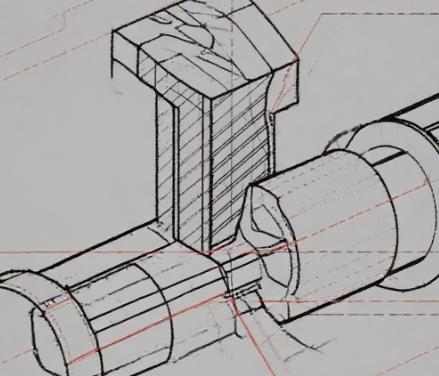Thin-wall machining presents significant challenges in maintaining dimensional stability, preventing distortion, and achieving required surface finishes. Success in this demanding area requires understanding key principles and implementing proven strategies. Below we explore essential techniques for mastering thin-wall components across various materials and applications.
Strategic Tool Selection
Specialized End Mill Geometries
Standard tooling often fails in thin-wall applications due to excessive deflection and vibration. Specialized thin-wall end mills feature optimized geometries with variable helix angles and eccentric reliefs that significantly reduce cutting forces and harmonic vibration. These tools maintain critical wall dimensions while extending tool life through superior chip evacuation and heat dissipation.
Reach-to-Diameter Ratio Optimization
The relationship between tool extension and diameter dramatically impacts thin-wall success. Tools with optimized neck relief provide necessary clearance while maintaining maximum rigidity. For walls deeper than 4x diameter, consider tapered neck tooling that gradually reduces diameter along the length, providing both reach and stability where it matters most.
Advanced Cutting Strategies
Adaptive Depth Management
Progressive axial depth of cut (ADOC) management is crucial for thin-wall integrity. Implement a tiered approach where initial roughing passes remove bulk material while leaving substantial support walls, followed by progressively lighter finishing passes. This method maintains structural support throughout the machining process, preventing wall deflection during material removal.
[Image: Diagram showing stepped ADOC strategy with multiple tiers and wall support illustration]
Dynamic Radial Engagement Control
As wall thickness decreases, radial depth of cut (RDOC) must adapt accordingly. Begin with conservative radial engagements when walls are thickest, then progressively reduce engagement as walls thin. The final finishing passes should utilize minimal radial engagement—typically 2-5% of tool diameter—to eliminate vibration and achieve superior surface finishes.
[Image: Progressive RDOC diagram showing 6-step approach with alternating sides and decreasing engagement]
Vibration Control Techniques
Dynamic Toolpath Programming
Modern CAM systems offer specialized toolpaths for thin-wall applications. Trochoidal milling and optimized stepover patterns distribute cutting forces evenly while minimizing sudden directional changes. These advanced toolpaths maintain consistent chip loads and prevent harmonic vibration buildup that can compromise thin walls.
Thermal Stabilization Methods
Temperature management is critical for thin-wall accuracy. Employ strategic coolant application and consider temporary support materials that can be removed post-machining. Low-melting-point alloys and soluble support structures provide exceptional vibration damping during cutting while being easily removable afterward.
Our Thin-Wall Machining Expertise
At Rapid Model, we've dedicated years to perfecting thin-wall machining across diverse materials including aluminum alloys, titanium, and advanced composites. Our specialized thin-wall machining services incorporate the latest tooling technologies and advanced programming strategies to deliver components with exceptional dimensional stability and surface quality.
We understand that successful thin-wall machining requires more than just proper tooling—it demands comprehensive process planning, rigorous quality control, and deep material knowledge. Our engineering team works closely with clients to optimize designs for manufacturability while maintaining critical performance characteristics.
Whether you require complex aerospace components, medical device housings, or lightweight structural elements, our thin-wall machining capabilities ensure consistent results even for the most challenging geometries and tightest tolerances.

Material-Specific Considerations
Aerospace Alloys
Aluminum and titanium alloys present unique challenges in thin-wall applications. Aluminum's low modulus requires careful force management, while titanium's poor thermal conductivity demands strategic heat control. Each material family requires tailored tool geometries, cutting parameters, and cooling strategies to prevent work hardening and thermal distortion.
Engineering Plastics and Composites
Non-metallic materials introduce different challenges including delamination, fiber pull-out, and thermal softening. Specialized tool geometries with polished flutes and optimized cutting edges are essential for clean shearing rather than tearing or melting these temperature-sensitive materials.
Process Verification and Quality Assurance
Implement in-process monitoring to detect potential issues before they affect part quality. Non-contact measurement systems can verify wall dimensions during machining, while vibration sensors can alert operators to developing chatter. Post-process inspection should include comprehensive dimensional analysis and wall thickness mapping to ensure compliance with all specifications.
Additional Precision Techniques
Multi-Axis Advantage
5-axis machining provides significant benefits for thin-wall components by maintaining optimal tool orientation relative to wall surfaces. This constant engagement angle ensures consistent cutting forces and eliminates the directional changes that can induce vibration in 3-axis approaches.
High-Efficiency Milling Applications
HEM strategies prove valuable in thin-wall roughing phases where they minimize heat concentration and extend tool life. By combining low radial engagement with high axial depth and elevated feed rates, HEM efficiently removes bulk material while preserving wall integrity for subsequent finishing operations.



